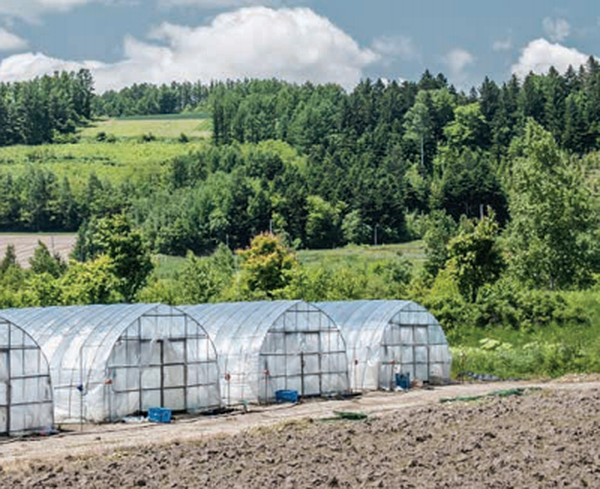Going to pot
Offers on BlueVault Organic Marijuana Ltd. of Pemberton are set to start rolling in, six weeks after Colliers International presented buyers with the opportunity to purchase the operation.
With indoor production aiming at close to 10 tonnes a year and the potential for additional outdoor production at its 135-acre property in the Agricultural Land Reserve (ALR), broker Alan Johnson, vice-president of the unique properties group within Colliers, says the farm presents a unique opportunity.
It’s also the first operation serving the recreational cannabis market listed with a commercial broker since Ottawa legalized cannabis in June. The crop becomes legal for sale on October 17.
“We have received interest from a wide range of prospects, but predominantly from those within the industry,” Johnson said, characterizing interest as “very strong.”
Colliers deferred accepting offers until the property was known to the market.
“I expect we will see offers in the next two weeks,” he said on August 7.
Some of the interest in BlueVault stems from the indoor facility’s readiness to operate, and its offer of more potential upside than a simple purchase of shares in a producer might yield. It’s also anchored by a significant amount of real estate that offers the possibility, especially under federal regulations published at the end of June, of a sizable outdoor crop in 2019. The province’s favouring of soil-based cannabis production within the ALR also stands to help – contrary to what many growers first expected.
“They really pooh-poohed it,” Johnson said. “They just said, ‘Ah, it’s never going to happen. Our client really believed it, he pushed it, and now I think he’s sitting quite well.”
In addition to BlueVault, United Greeneries Ltd. purchased a 398-acre site in the Fraser Canyon earlier this year for 140 acres of field production.
ALR report
A preliminary report from the committee the province struck earlier this year to suggest ways to revitalize the Agricultural Land Commission and the land reserve it oversees has been released, with 17 recommendations.
B.C Agriculture Minister has repeatedly said the best way to protect farmland is to farm it, and to that end the commission’s report urges an “agriculture first” emphasis in all decision-making. The stance plays to the choir, but various recommendations flesh out the new government’s approach to managing the reserve. This includes a recommendation of greater independence for the commission, a creature of legislation that operates at arm’s length from government.
The committee recommends, for example, eliminating the two-zone structure for the ALR introduced in 2014 and abolishing the regional panels introduced in 2002. The aim is to allow the commission and its chair – currently Jennifer Dyson, former chair of the committee charged with drafting the revitalization recommendations – to act with a provincial outlook and give less play to local considerations. (BC Liberal agriculture critic Ian Paton counters that this diminishes the value of local knowledge.)
Residential development and fill activities will also face greater restrictions, while tighter controls on resource development and cannabis production are planned when the committee delivers its final recommendations this fall.
Narrow field
Yet not all agriculture is equal when it comes to keeping land in production. A case in point is cannabis, which has drawn opposition since it was first legalized for medicinal use because it’s not a food crop. Recent changes to regulations governing the ALR say cannabis can be grown only in crop production structures built prior to July 13 or in soil-based systems. Municipalities can also ban cannabis production outright on land outside the ALR.
The shift surprises Colliers International’s Johnson, who said the land commission has typically constrained the limitations local government puts on agriculture and has given producers choice over production systems. By advocating for more production while limiting certain types – and allowing municipalities to do so, too – it sends mixed messages, he said.
“[It’s] a big conversation and that’s one that’s going to continue to go back and forth between all the parties involved.”



